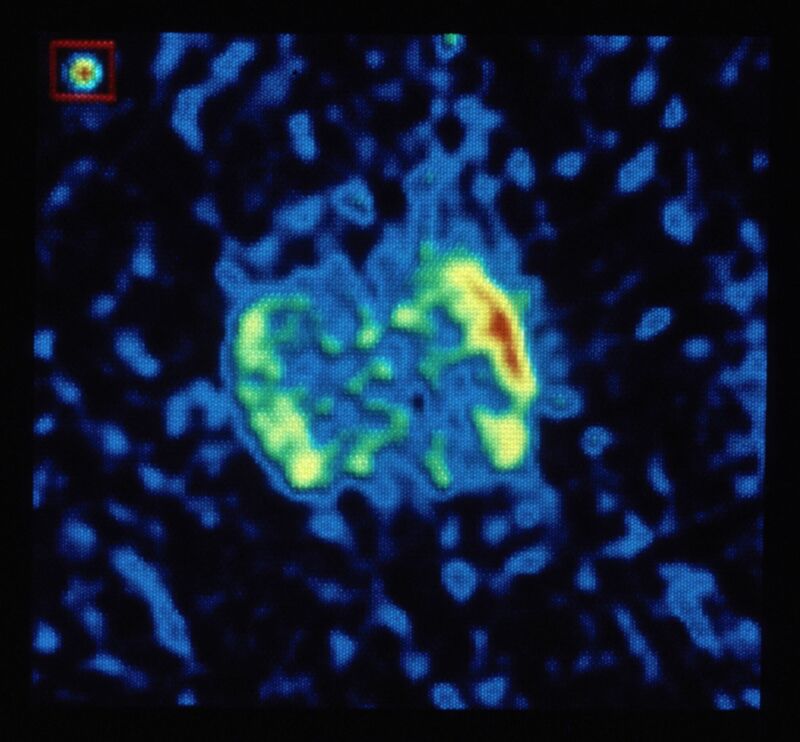Planetary Nebula NGC 40
Description
In 1977, the newly functioning VLA was used to map the radio emission from shells of hot gas, known as planetary nebulae, ejected from dying stars. NGC 40 is a planetary nebula formed when when a star expelled part of its atmosphere and then maintained it as an expanding cloud of hot, ionized gas. The intensity of the radiation is denoted by color, which ranges from red (brightest) to blue (faintest). The effective angular size of the array's beam is shown in the inset. The resolution of this radio image, about 1.5 seconds of arc, matches that of excellent optical photographs. This early VLA map (the first made of an extended source by the VLA) was used to show that the VLA was, in fact, successful at mapping. Success was determined by comparing the radio image to a good optical photograph.
VLA in hybrid-configuration using 8 antennas.
Creator
Legacy Astronomical Images
Rights
NRAO/AUI/NSF does not hold full copyright for this image. Contact the archivist for details.
Type
Legacy Astronomical Image
Object Name
NGC40
Investigators
R.M. Hjellming, R.C. Bignell, B. Balick
Telescope
Very Large Array (VLA)
Observation Date
1977-05-00
Type of Observation
continuum
Band
C
Wavelength
6 cm
Frequency
5.0 GHz
Center of Image
RA 0:13:1.020, Dec: 72:31:19.090 (J2000)
Field of View
0.050000 x 0.050000 degrees
Notes
Contact the archivist for a high resolution tif of this image.
Series
Galactic Sources Series
Unit
Planetary Nebulae Unit
Citation
Legacy Astronomical Images, “Planetary Nebula NGC 40,” NRAO/AUI Archives, accessed April 20, 2025, https://www.nrao.edu/archives/items/show/33468.

